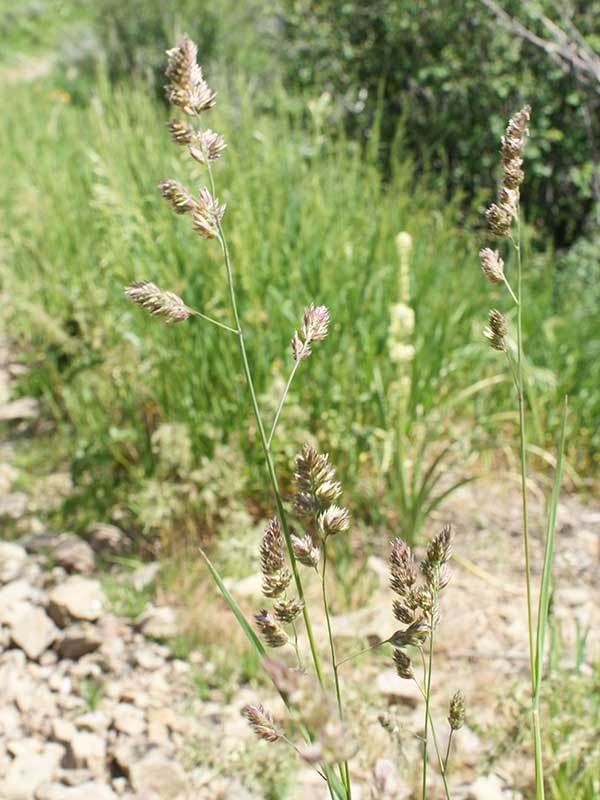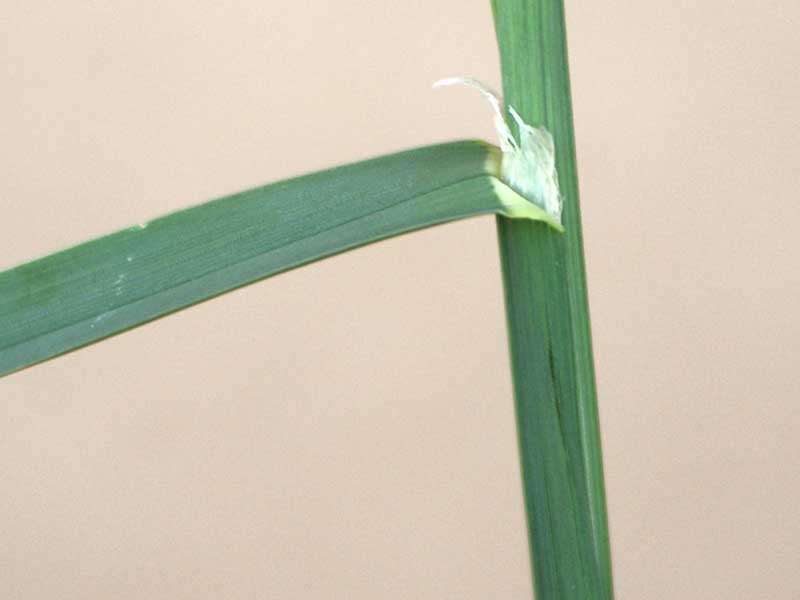Dactylis glomerata / orchardgrass
- perennial bunchgrass
- branched inflorescence with lowest branch well below the others
- spikelets wedge-shaped, flattened in tight clusters
- florets green to red/purple tinged; grey-brown when seeds mature
- introduced and widespread, but not in wet areas
Also known as: cock’s-foot, cat grass
Note: grasses have a nomenclature all their own, much different from that of dicots. A good resource/slide show from the University of Idaho on grass structures is available here.
Orchardgrass is a perennial bunchgrass specialized for growing in cool areas, or in the cool seasons of not so cool areas. It obviously thinks living in the Valley is pretty cool… as do I. Growth is most rapid in early spring as it taps into water as far as 2 feet below the surface. It can grow to as much as 6 feet tall. The growth form of orchardgrass is one of dense tussocks, or tufts. It has a dense, fibrous roots system, but does not spread by rhizomes or stolons, so the clumps appear individually rather than as a sod or mat.
The grey-green leaves are long, rough-feeling, and–well–grass-like. They are folded while expanding, but later are flat. On the bottom of the leaves, you’ll see a prominent white midrib. The base of the stem is flattened. This helps distinguish it from many other grasses. If you peel back a leaf to where the blade meets the leaf sheath surrounding the stem, you’ll see a thin, membraneous and often split ligule, about ¼ inch long (see gallery photo).
The flower head is a panicle up to 8 inches long, and branched. The branches are close together and spike-like, with the lowest branch well below the others. Each branch has several tight clusters of spikelets (see gallery close-up) with several florets. Overall, the spikelets are wedge-shaped and flattened. From a distance, they range in color from green to red- or purple-tinged depending on whether they are in the shade (green) or full sun (red). As the seeds mature, they turn pale grey-brown.
Interesting bits – Orchardgrass forms a dense network of non-rhizomatous roots, making it useful for erosion control. Unlike some alternatives, however, it will eventually be replaced by native vegetation or other seeded species. It also tolerates high nitrogen levels and can be useful in gathering and recycling that nutrient. It has been introduced throughout most of the cool-temperate regions of the world as a forage grass in pastures, and for hay and silage production. It is highly palatable to all classes of livestock and large ungulates (elk and deer), as well was geese and rabbits.
Interestingly, the grass is often grown indoors to satisfy the craving of domestic cats to chew grass… hence, one of its alternate names, “cat grass”.
Orchardgrass is native to Europe, temperate Asia and northern Africa, but has been grown in North America since the 1750s. In parts of the east, it’s considered a noxious weed. In the west, it’s found on areas that once supported sagebrush, grass, pinyon-juniper, ponderosa pine, aspen and Douglas fir plant communities. So all that was here, but now, you’ll see orchardgrass almost everywhere–meadows, pasture, roadsides, and rough grassland, but not where it is very wet.
| Blossom size | |
|---|---|
| Color | |
| Family | |
| Inflorescence size | |
| Inflorescence type | |
| When? | |
| Where? | exposed, forest gaps and roadsides, grasslands, meadows, shaded edges, widespread |





